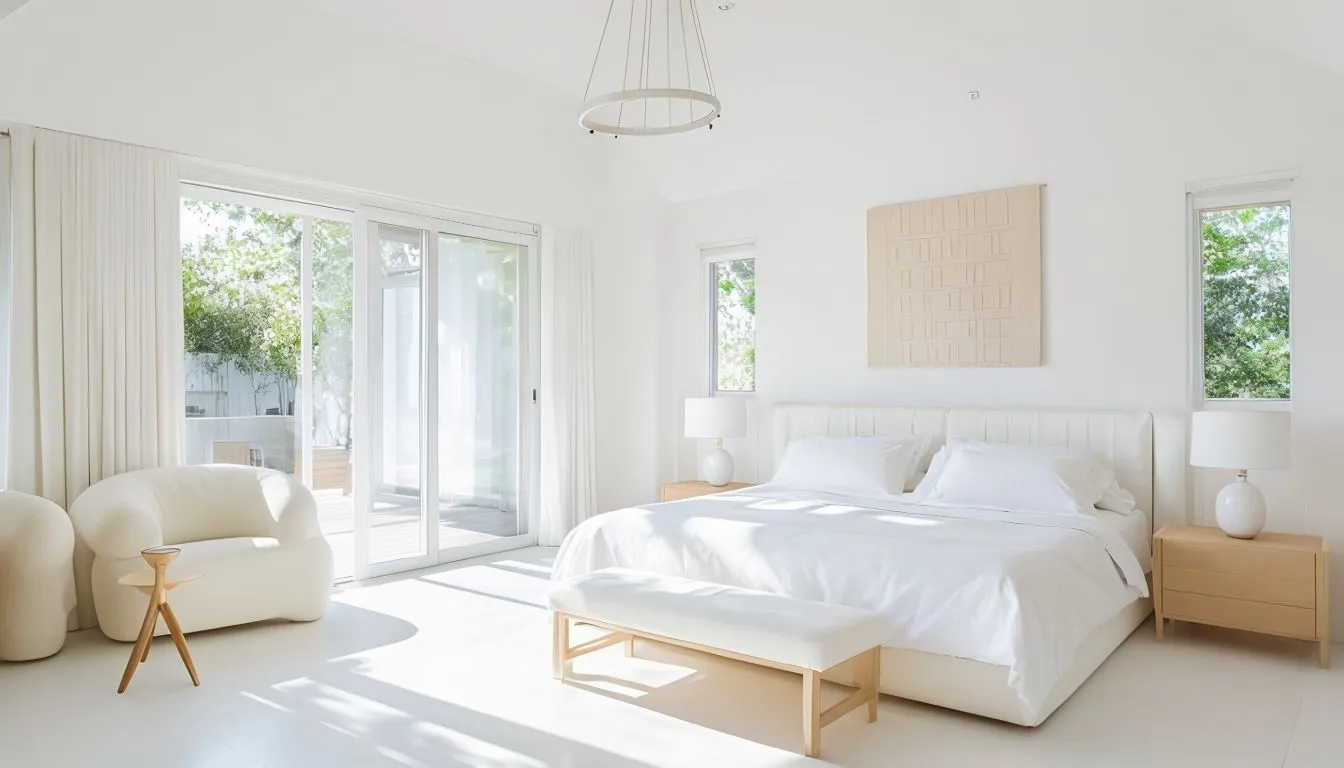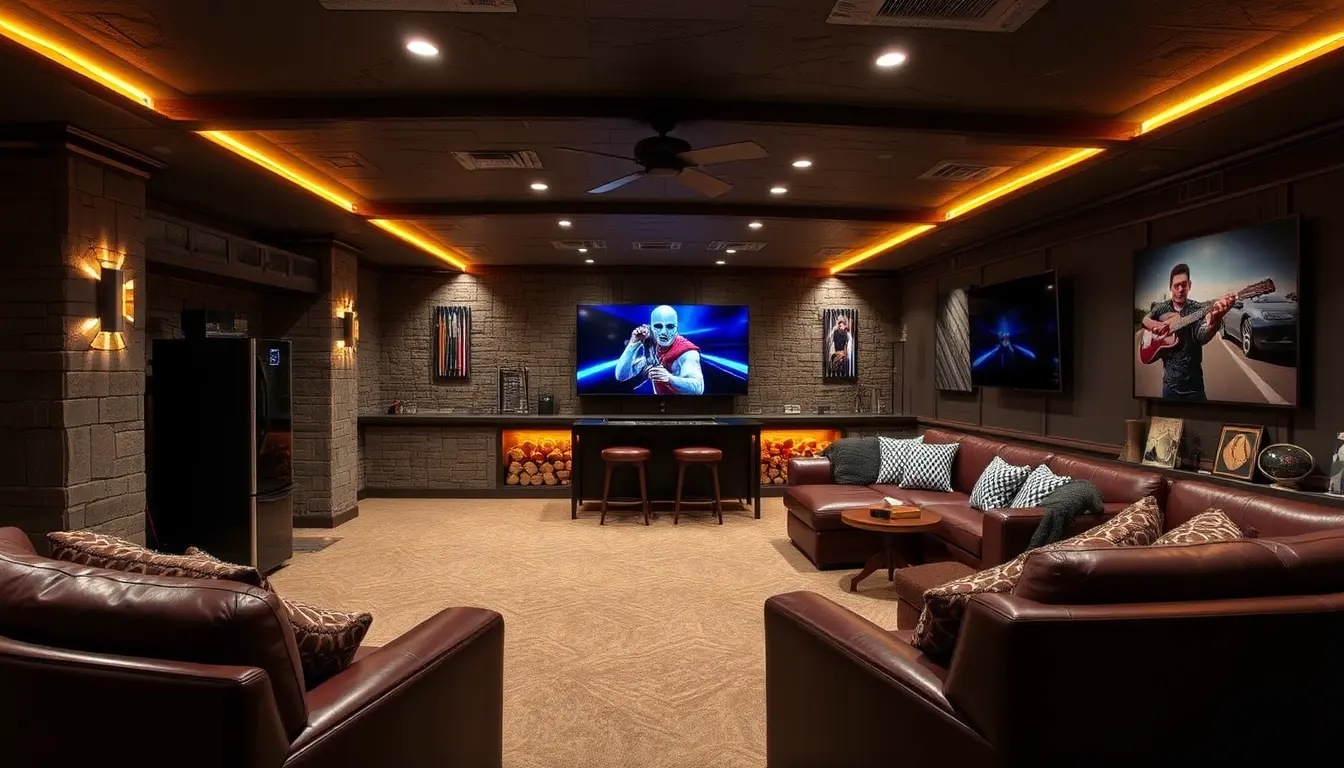1. Start with a Clean Slate: The Foundation of Minimalist Design
In this post, I’m going to show you how I come up with minimalist bedroom ideas and inspirations. When I first started my minimalist journey, I made the rookie mistake of trying to organize everything without removing anything first. Trust me, that doesn’t work! The key is to start fresh. I recommend taking everything out of your bedroom – yes, everything – and only bringing back items that serve a purpose or bring you joy. It’s amazing how this simple act can help you see your space in a new light.
Think of your bedroom as a blank canvas. Choose a neutral color palette as your base – I love warm whites and soft beiges. These colors create a sense of calm and make the room feel more spacious. Remember, minimalism isn’t about creating a stark, cold environment; it’s about intentional design choices that promote tranquility.
I recently helped a client who was overwhelmed by her bedroom’s bold wallpaper and countless decorative items. We started by stripping everything back to basics, painting the walls in a soft cream color, and carefully selecting which items would return to the space. The transformation wasn’t just visual – she reported sleeping better and feeling more relaxed in her new environment.
When choosing your base colors, consider these tried-and-true combinations:
– Warm white walls with light gray accents
– Soft beige with natural wood tones
– Pure white with subtle touches of black for contrast
– Light greige (gray-beige) with white trim
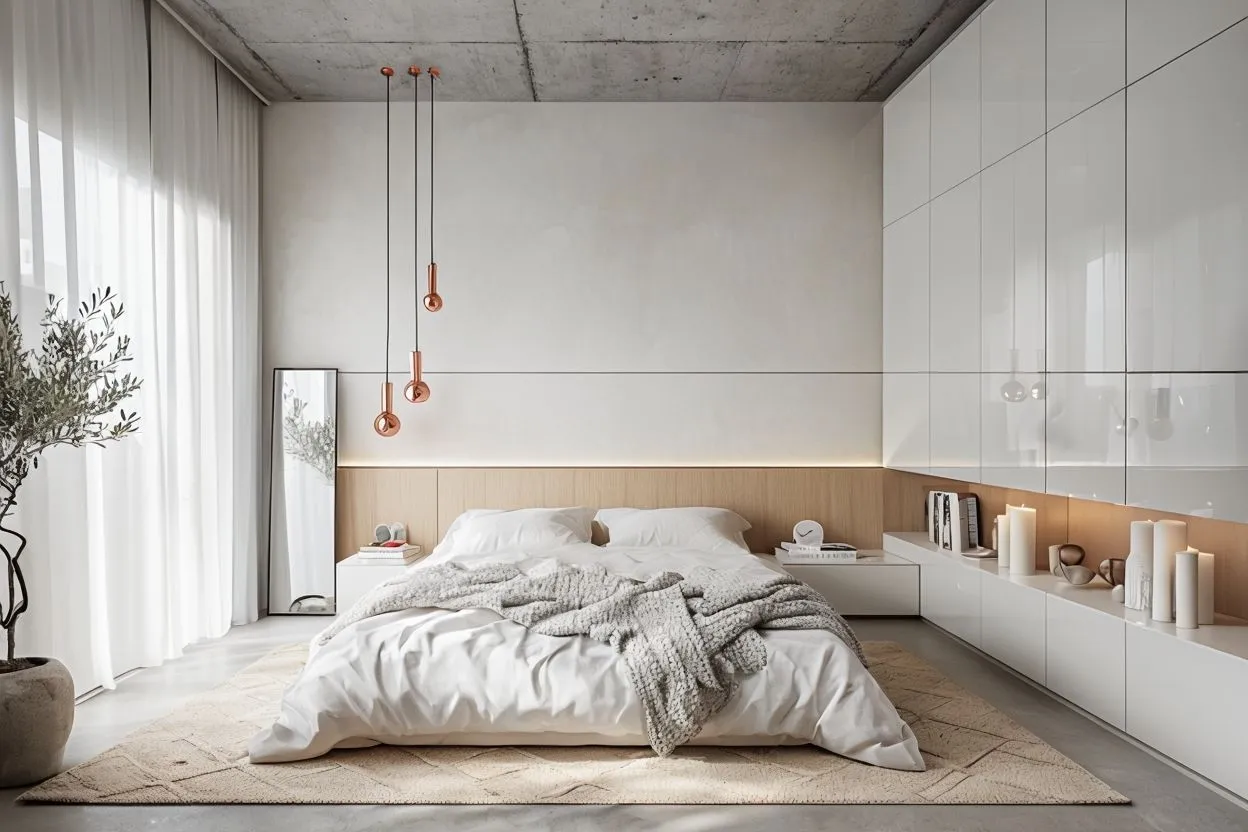
2. Essential Furniture Only: Quality Over Quantity
One of the most common questions my clients ask is, “What furniture do I actually need?”
Here’s my tried-and-true list of bedroom essentials:
– A comfortable bed (this is non-negotiable!)
– One bedside table (yes, just one can work!)
– A small dresser for clothing storage
– A cozy reading chair (if space allows)
I’ve found that when you invest in fewer, high-quality pieces, they tend to last longer and serve you better. My own minimalist bedroom transformation taught me that having three rickety bedside tables isn’t as functional as having one well-made piece with proper storage.
Let’s talk about bed frames – they set the tone for your entire room. I always recommend investing in a simple, well-constructed frame that will last for years. One of my clients was hesitant to spend more on a quality bed frame, but after experiencing the difference in stability and aesthetics, she understood why it was worth the investment.
When selecting furniture, consider these factors:
– Functionality first: Each piece should serve a clear purpose
– Scale: Choose pieces that fit your room’s proportions
– Material quality: Look for solid wood, high-grade metals, or durable composites
– Visual weight: opt for furniture with clean lines and raised legs to create a sense of space
– Multi-purpose potential: A bench at the foot of your bed can provide both seating and storage
3. Smart Storage Solutions: Hidden Organization
Let’s talk about the elephant in the room – storage. We all have stuff, and pretending otherwise isn’t realistic. The key is smart storage that maintains the minimalist aesthetic while keeping your essentials accessible. I learned this lesson the hard way when I first tried to achieve a minimalist look by simply hiding everything under my bed!
Instead, opt for furniture with built-in storage, like a bed frame with drawers or a hollow ottoman. One of my favorite tricks is using vacuum-sealed bags for seasonal clothing and storing them in labeled boxes in your closet. This approach has helped many of my clients maintain a clutter-free space without feeling like they’re sacrificing their belongings.
Here’s my comprehensive storage strategy that has worked wonders for countless clients:
1. Closet Organization:
– Use slim, uniform hangers to maximize space and create visual harmony
– Implement the “one in, one out” rule for clothing
– Install drawer organizers for smaller items
– Use clear storage boxes for seasonal items
2. Under-bed Storage:
– Choose attractive storage containers that slide easily
– Use drawer dividers to keep items organized
– Label everything clearly for easy access
3. Vertical Storage:
– Install floating shelves for books and essential items
– Use wall-mounted organizers for jewelry and accessories
– Consider a Murphy bed for extremely small spaces
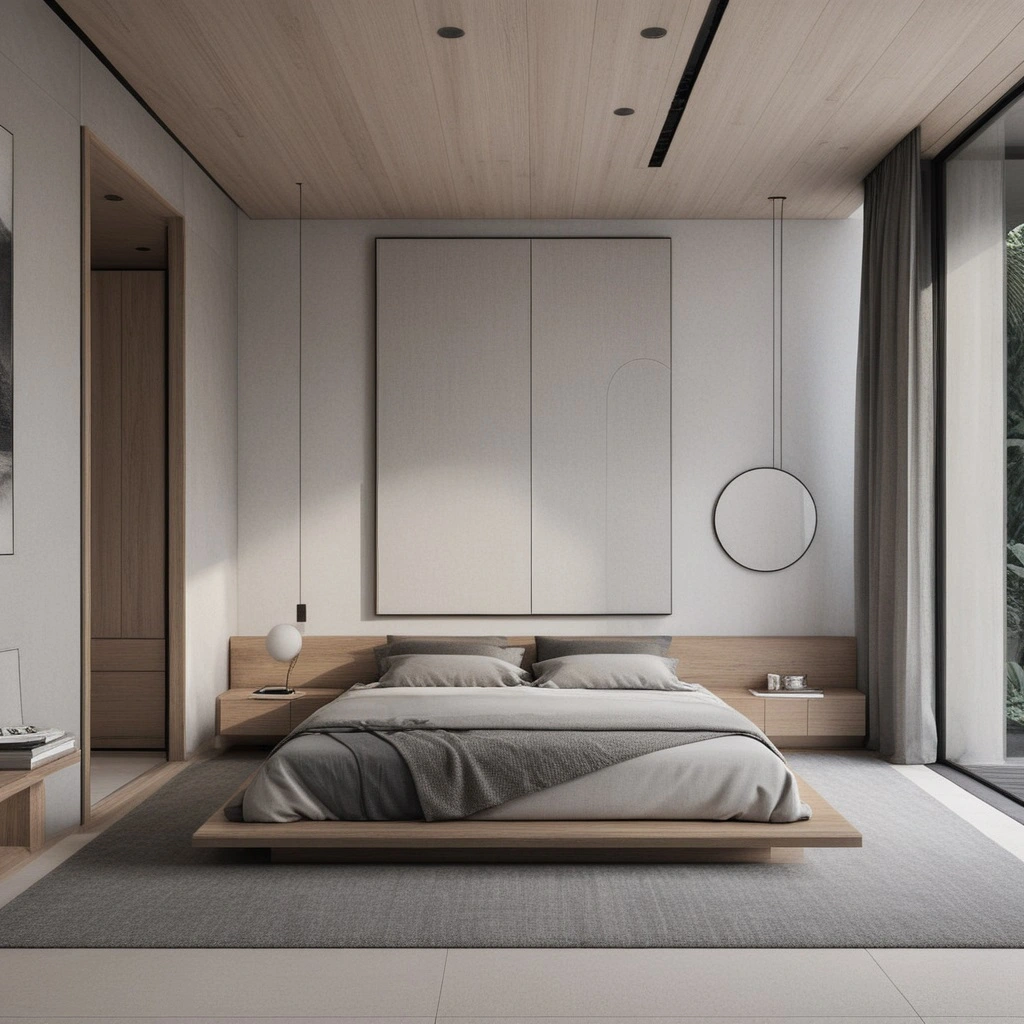
4. Mindful Decor: Less is More
When it comes to decorating a minimalist bedroom, remember this mantra: less is more. But that doesn’t mean your space should feel empty or boring! I like to follow the rule of three: choose no more than three decorative items for any surface.
For example, on your bedside table, you might have:
– A simple lamp
– A small plant
– A meaningful photo or art piece
The key is choosing items that speak to you personally while maintaining visual harmony. In my bedroom, I have a single piece of calming abstract art above my bed and a potted snake plant in the corner. These elements add character without overwhelming the space.
I recently worked with a client who was afraid her room would feel cold and impersonal after embracing minimalism. We carefully selected a few meaningful pieces – a handwoven throw blanket from her travels, a black and white photo from her wedding, and a ceramic vase she made herself. These personal touches made all the difference in creating a space that felt both minimal and deeply personal.
When selecting decor, consider these elements:
– Texture: Mix smooth and rough textures for visual interest
– Natural elements: Incorporate plants or natural materials
– Lighting: Layer different light sources for ambiance
– Personal items: Choose meaningful pieces that tell your story
– Negative space: Leave empty areas to let your room “breathe”
Remember, creating a minimalist bedroom is a journey, not a destination. It took me months to find the right balance in my own space, and I’m still tweaking things occasionally. The goal isn’t perfection – it’s creating a peaceful retreat that helps you rest and recharge.
By focusing on these four key areas – creating a clean slate, choosing essential furniture, implementing smart storage, and adding mindful decor – you’ll be well on your way to creating a minimalist bedroom that not only looks beautiful but also functions perfectly for your lifestyle.
Take it from someone who’s been there: the effort is worth it when you finally have a serene space to call your own.
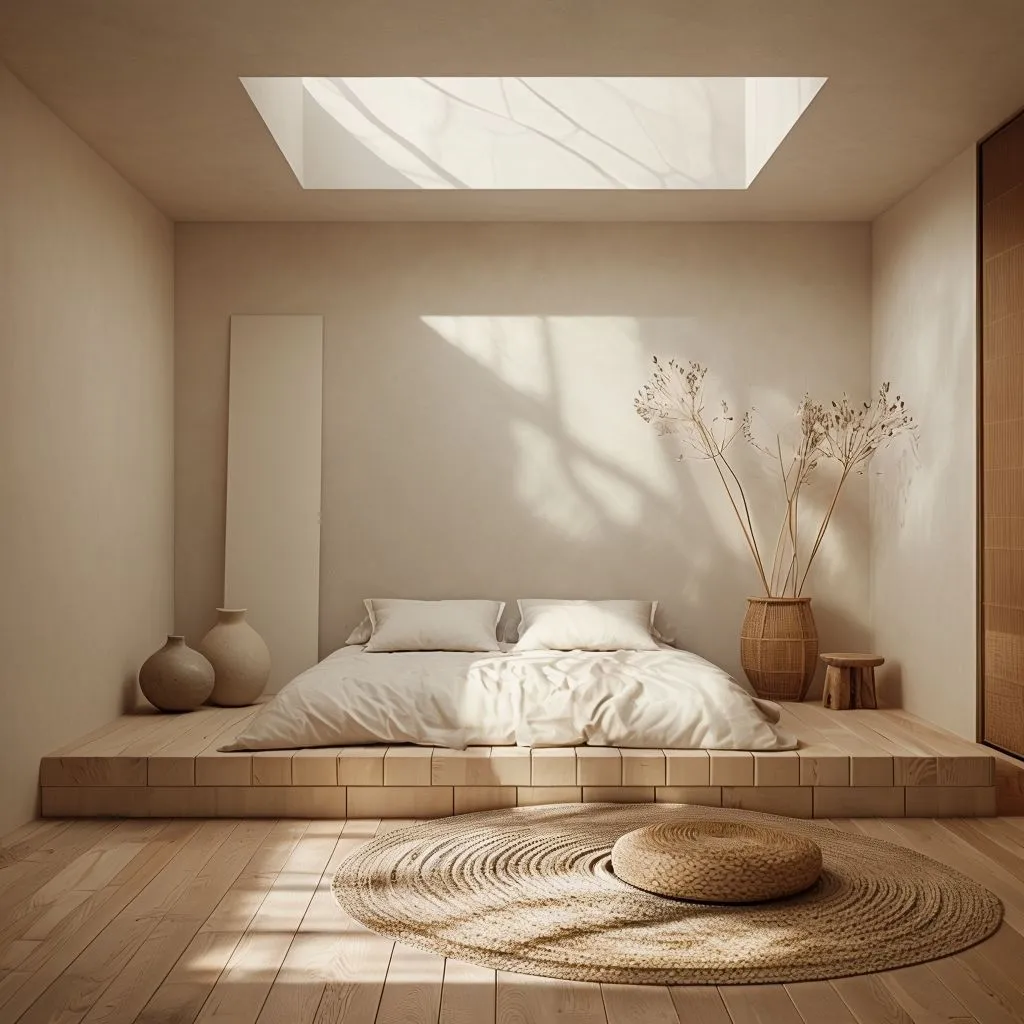
Besides uncluttered spaces and beautiful homes, there are also psychological benefits to a minimalist lifestyle. You can read more about them here.
